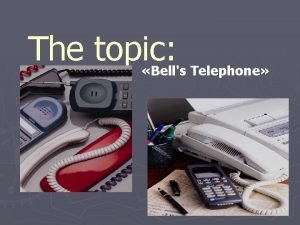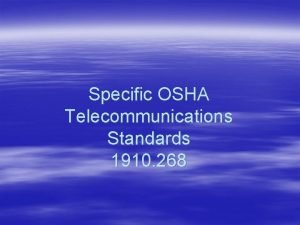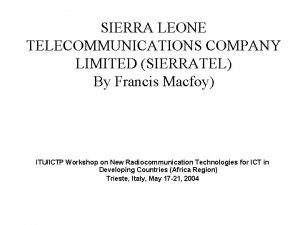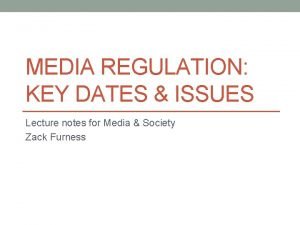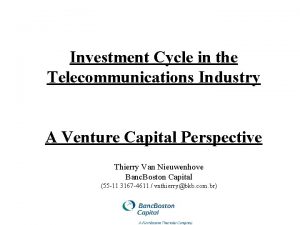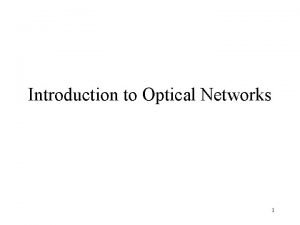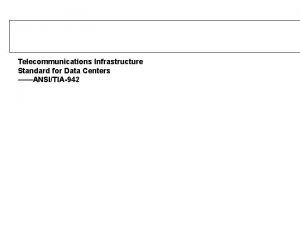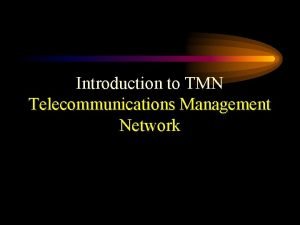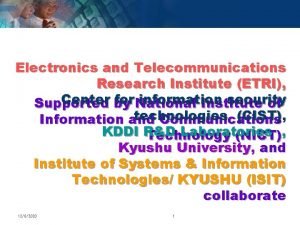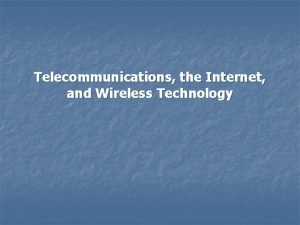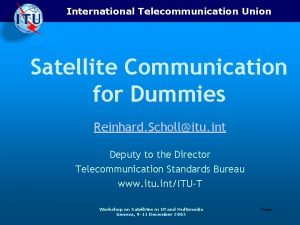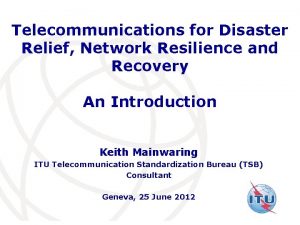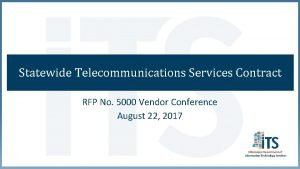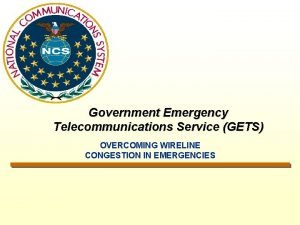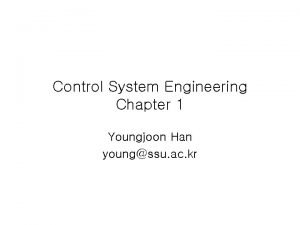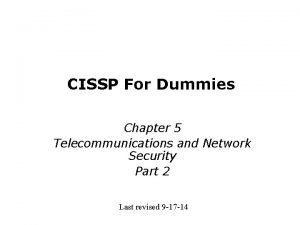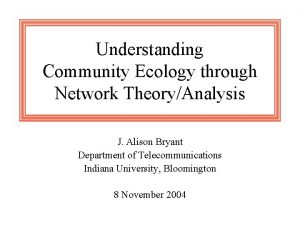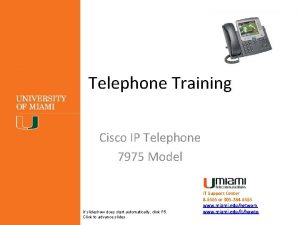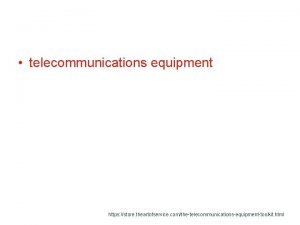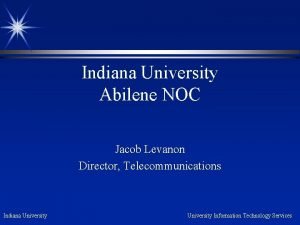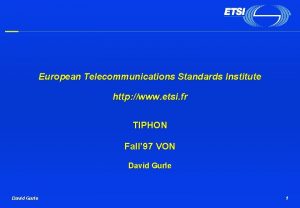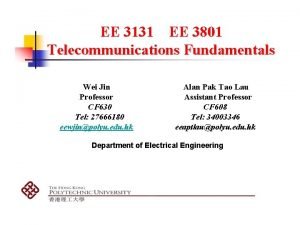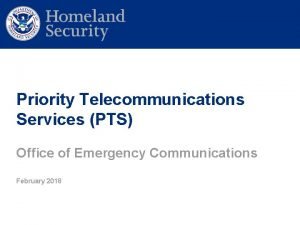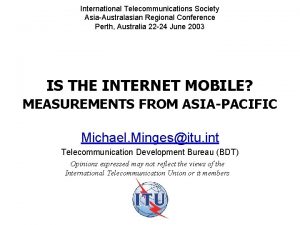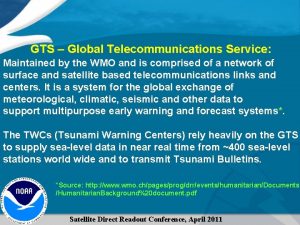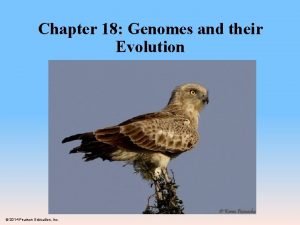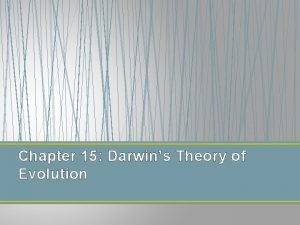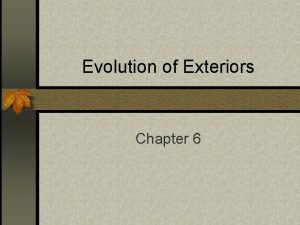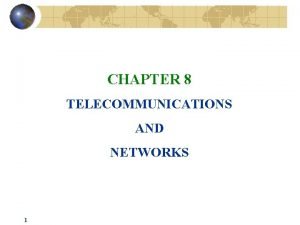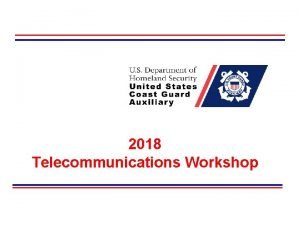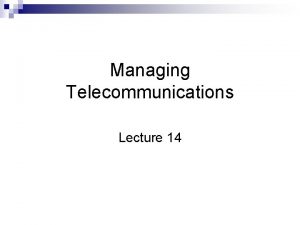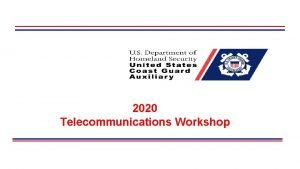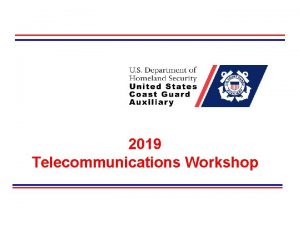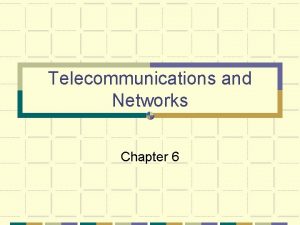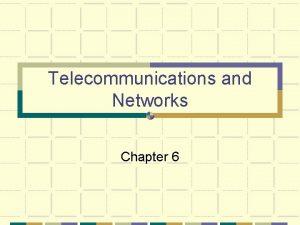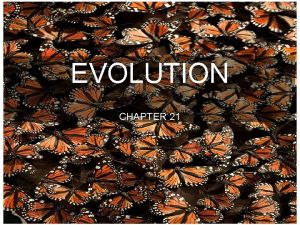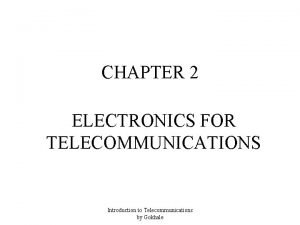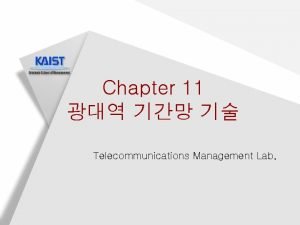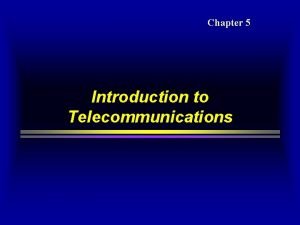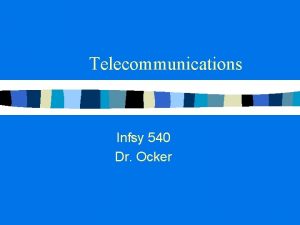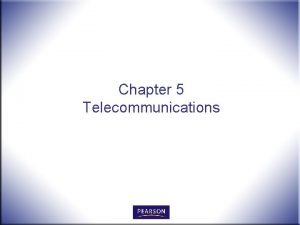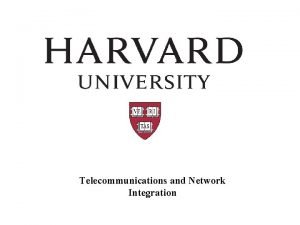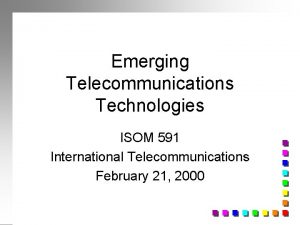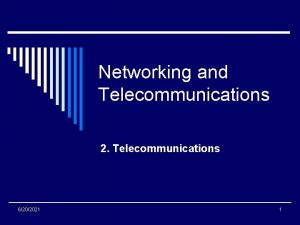Telecommunications Concepts Chapter 1 1 Evolution of Telecommunications
















































- Slides: 48

Telecommunications Concepts Chapter 1. 1 Evolution of Telecommunications 1 09 -07 -K. Steenhaut & J. Tiberghien - VUB

Contents • The 19 th century telecommunications – Telegraph - Telephone – Digital vs. analog communications • The voice networks & the data networks • The electronics revolution (1960 -1980) – – – Digital sound Mainframe computers with remote access The first unification : ISDN Local area networks Wide area and local area networks integration • The Internet – The research project – The universal computer communications medium – The successful unification ? 2 09 -07 -K. Steenhaut & J. Tiberghien - VUB

Contents • The 19 th century telecommunications – Telegraph - Telephone – Digital vs. analog communications • The voice networks & the data networks • The electronics revolution (1960 -1980) – – – Digital sound Mainframe computers with remote access The first unification : ISDN Local area networks Wide area and local area networks integration • The Internet – The research project – The universal computer communications medium – The successful unification ? 3 09 -07 -K. Steenhaut & J. Tiberghien - VUB

The Chappe Telegraph (Claude Chappe, 1763 -1805) 92 out of 256 (= 4*8*8) positions represented characters. Integrity of message could be restored at each relay station In 1844, 534 relays linked Paris with 29 cities, covering in total 5000 Km. 4 09 -07 -K. Steenhaut & J. Tiberghien - VUB

The Morse Telegraph Samuel Morse, 1791 -1872 First electrical telegraph demonstrated in 1837 5 09 -07 -K. Steenhaut & J. Tiberghien - VUB

The Morse Telegraph Signal strength can be restored by means of electromechanical relays connecting separate telegraphic circuits. On land lines, unlimited distances can be covered, without increasing significantly the error rate. 6 09 -07 -K. Steenhaut & J. Tiberghien - VUB

The Telephone Graham Bell, 1876. 7 09 -07 -K. Steenhaut & J. Tiberghien - VUB

Analog vs. Digital Transmission 6: 12 Analog • Almost infinite number of states • External perturbations can not be distinguished from original signal (superposed noise) • Information degrades along the lines 8 Digital • Finite, small, number of states • Most external perturbations can be distinguished from original signal • Information can be restored in relays 09 -07 -K. Steenhaut & J. Tiberghien - VUB

Digital Techniques How are numbers represented in electronic devices ? • Binary numbers (base 2) are used. • A binary digit (bit) can be represented by a switch: – Value 0 : switch open – Value 1 : switch closed • A number with n bits can take 2 n different values – 2 bits : 4 combinations 00 01 10 11 – 3 bits : 8 combinations 000 001 010 011 100 101 110 111 – 8 bits (= 1 byte) 256 combinations – 16 bits: 65 536 combinations – 24 bits: 16 777 216 combinations – 32 bits: 4 294 967 296 combinations 9 09 -07 -K. Steenhaut & J. Tiberghien - VUB

Contents • The 19 th century telecommunications – Telegraph - Telephone – Digital vs. analog communications • The voice networks & the data networks • The electronics revolution (1960 -1980) – – – Digital sound Mainframe computers with remote access The first unification : ISDN Local area networks Wide area and local area networks integration • The Internet – The research project – The universal computer communications medium – The successful unification ? 10 09 -07 -K. Steenhaut & J. Tiberghien - VUB

The Telephone Full mesh network Links = n*(n-1)/2 11 09 -07 -K. Steenhaut & J. Tiberghien - VUB

The Telephone With central switchboard Links = n 12 09 -07 -K. Steenhaut & J. Tiberghien - VUB

Automatic Exchange (1900) Conversation with switch operator replaced by signaling protocol - Voice : analog - Signaling : digital 13 09 -07 -K. Steenhaut & J. Tiberghien - VUB

The Telephone Network SW SW Trunk lines SW SW PABX SW 14 09 -07 -K. Steenhaut & J. Tiberghien - VUB

Telex Networks (1930 -1990) Morse code replaced by Baudot or ASCII code 15 09 -07 -K. Steenhaut & J. Tiberghien - VUB

Alphabetical Codes Morse Baudot ASCII A a B C D E 3 9 16 09 -07 -K. Steenhaut & J. Tiberghien - VUB

Extended ASCII Character Set (8 bit) 032 17 048 0 064 @ 080 P 096 ` 112 p 128 Ç 144 É 160 á 033 ! 049 1 065 A 081 Q 097 a 113 q 129 ü 145 æ 161 í 034 “ 050 2 066 B 082 R 098 b 114 r 130 é 146 Æ 162 ó 035 # 051 3 067 C 083 S 099 c 115 s 131 â 147 ô 163 ú 036 $ 052 4 068 D 084 T 100 d 116 t 132 ä 148 ö 164 ñ 037 % 053 5 069 E 085 U 101 e 117 u 133 à 149 ò 165 Ñ 038 & 054 6 070 F 086 V 102 f 118 v 134 å 150 û 166 ª 038 ‘ 055 7 071 G 087 W 103 g 119 w 135 ç 151 ù 167 º 040 ( 056 8 072 H 088 X 104 h 120 x 136 ê 152 ÿ 168 ¿ 041 ) 057 9 073 I 089 Y 105 i 121 y 137 ë 153 Ö 169 _ 042 * 058 : 074 J 090 Z 106 j 122 z 138 è 154 Ü 170 ¬ 043 + 059 ; 075 K 091 [ 107 k 123 { 139 ï 155 ¢ 171 ½ 044 , 060 < 076 L 092 108 l 124 | 140 î 156 £ 172 ¼ 045 - 061 = 077 M 093 ] 109 m 125 } 141 ì 157 ¥ 173 ¡ 046 . 062 > 078 N 094 ^ 110 n 126 ~ 142 Ä 158 P 174 « 047 / 063 ? 079 O 095 _ 111 o 127 143 Å 159 ƒ 175 » 09 -07 -K. Steenhaut & J. Tiberghien - VUB

Unicode (16 bit) 0000 ASCII Latin, Greek, Cyrillic, and Armenian Arabic and Hebrew Indic Punctuation, math, graphics Chinese / Japanese / Korean symbols Unified Chinese / Japanese / Korean ideographs Private applications FFFF 18 09 -07 -K. Steenhaut & J. Tiberghien - VUB

The Dual Networks Voice Network Analog+Digital Data Network Digital 19 09 -07 -K. Steenhaut & J. Tiberghien - VUB

Contents • The 19 th century telecommunications – Telegraph - Telephone – Digital vs. analog communications • The voice networks & the data networks • The electronics revolution (1960 -1980) – – – Digital sound Mainframe computers with remote access The first unification : ISDN Local area networks Wide area and local area networks integration • The Internet – The research project – The universal computer communications medium – The successful unification ? 20 09 -07 -K. Steenhaut & J. Tiberghien - VUB

The Electronics Revolution (1970 -1980) • Integrated circuits (“chips”) make electronics affordable. • Mainframe computers become very powerful • Mini & microcomputers become very popular • Digital techniques offer better price/performance for sound applications 21 09 -07 -K. Steenhaut & J. Tiberghien - VUB

Music Records -096 +057 +164 +210 +219 +216 +165 -003 -117 -183 -138 -067 Analog 22 Digital (CD) (44100 measurements/s) 09 -07 -K. Steenhaut & J. Tiberghien - VUB

Records with a scratch -096 +057 +164 +210 XXXX -117 -183 -138 -067 Analog 23 +210 +145 +079 +014 -052 -117 Digital (CD) 09 -07 -K. Steenhaut & J. Tiberghien - VUB

Remote Access to Computers (1970) Mainframe Computer Star Network Dumb Terminals 24 09 -07 -K. Steenhaut & J. Tiberghien - VUB

Integrated Services Digital Network The first attempt to integrate voice and data • Voice digitized at 64 Kb/s (8000 samples/s, 8 bit) • Truly digital signaling • A telephone connection = a 64 Kb/s digital link + A 64 Kb/s digital link is excellent for connecting a terminal to a mainframe computer - Connection time billing inadequate for data 4 ISDN widely used for telephony 4 ISDN marginal for data applications 25 09 -07 -K. Steenhaut & J. Tiberghien - VUB

Local Area Networks (1970) LAN’s initially introduced for • Printer sharing • File sharing • . . . 26 09 -07 -K. Steenhaut & J. Tiberghien - VUB

The Dual Screen Desk (1980) LAN WAN LAN 27 09 -07 -K. Steenhaut & J. Tiberghien - VUB

LAN-WAN Integration (1990) LAN WAN LAN 28 09 -07 -K. Steenhaut & J. Tiberghien - VUB

Client - Server Systems Interconnection Network (LANs+WAN) 29 09 -07 -K. Steenhaut & J. Tiberghien - VUB

Client - Server Systems Benefits • Sharing of storage – Access to common data – Professional back-up facilities – Centralized software (& data) maintenance • Sharing of processing power – Unloading of central servers – Supporting local clients for exceptional needs • Sharing of expensive peripherals 30 09 -07 -K. Steenhaut & J. Tiberghien - VUB

Terminal Emulation = sub-minimal Client-server system • The personal workstations are used – as stand alone computers – as terminals connected to other computers • The user has to mentally switch between widely different user interfaces and operating systems. • Transferring data between local and remote applications is far from trivial • Terminal emulation is very user unfriendly !!! 31 09 -07 -K. Steenhaut & J. Tiberghien - VUB

Virtual Mainframe = true Client-Server system • The users interface of all applications runs on the personal workstations. • For some applications, the workstation requests help from specialized servers. The user remains unaware of such requests. • Servers can be optimized for specific tasks • Virtual Mainframes can be – Very user friendly – cost effective 32 09 -07 -K. Steenhaut & J. Tiberghien - VUB

Three Tier Virtual Mainframes Back Office High-performance Local Area Network Web servers + Access Control Corporate intranet or Internet 33 09 -07 -K. Steenhaut & J. Tiberghien - VUB

Contents • The 19 th century telecommunications – Telegraph - Telephone – Digital vs. analog communications • The voice networks & the data networks • The electronics revolution (1960 -1980) – – – Digital sound Mainframe computers with remote access The first unification : ISDN Local area networks Wide area and local area networks integration • The Internet – The research project – The universal computer communications medium – The successful unification ? 34 09 -07 -K. Steenhaut & J. Tiberghien - VUB

70’s: Need for Open Networks CCITT/ISO start standardization work for Open Systems Interconnection ARPA finances Research on open Network Technology: • a Research WAN, ARPANET • research on LAN interconnections Combination of the two ARPA efforts resulted in the 35 INTERNET 09 -07 -K. Steenhaut & J. Tiberghien - VUB

The Early ARPANET (1976) London Vince Cerf Hawaii 56 Kbps terrestrial link Satellite link 36 09 -07 -K. Steenhaut & J. Tiberghien - VUB

The Results: • TCP/IP + Set of Application Protocols – Set of communication “standards” allowing interoperability of almost all brands of computers. – Applicable to » Local Area Networks » Wide Area Networks » Interconnection of LAN’s through WAN’s • The INTERNET – Communication facility for the Research Community – Financed by US government 37 09 -07 -K. Steenhaut & J. Tiberghien - VUB

The success story of TCP/IP • To connect a computer to the ARPANET, TCP/IP is required ! • Many different computers in use in Universities and research centers. • TCP/IP becomes THE networking software available on ALL machines. • Many stand-alone networks using TCP/IP appear due to the wide availability of TCP/IP and the many applications available for it. 38 09 -07 -K. Steenhaut & J. Tiberghien - VUB

The success story of ARPANET • • 39 • Universities where TCP/IP was developed start using the ARPANET backbone as a general purpose communication network. Other universities and research centers also want to get connected: with the help of the NSF, ARPANET becomes the North American Research Network. FREE access but “Acceptable Use Policy” imposed by ARPA on all users. Exponential growth of number of users Enormous help for US researchers. 09 -07 -K. Steenhaut & J. Tiberghien - VUB

Major Internet Changes 1989 -1992 • DARPA is no longer the major funds provider. • Apparition of the. COM domain • Backbone operated by private companies and paid by the US-NSF and the connected networks. • “Acceptable Use Policy” no longer required on the backbone, even if many of the connected networks still have one. • Commercial “Internet Service Providers” build private networks to connect their subscribers to the Internet. • The Internet has become a set of independently financed, cooperating regional networks. 40 09 -07 -K. Steenhaut & J. Tiberghien - VUB

Internet Cost Structure GIANT NL USA Surfnet BE Belnet Planet Uunet eunet Skynet Uunet - Backbone infrastructure and neutral interconnects paid by interconnected networks, proportional to their access bandwidth. - Cost of direct interconnects shared by partners. - Not ACTUAL but POTENTIAL traffic is charged. 41 09 -07 -K. Steenhaut & J. Tiberghien - VUB

Firewalls 42 = Internet = Firewall = Intranet = Secure Intranet 09 -07 -K. Steenhaut & J. Tiberghien - VUB

The Internet At last a successful integration of voice & data services ? ? ? • Internet has become almost as ubiquitous as the traditional telephone network. • Internet cost structure based upon potential usage capabilities rather than actual usage. • Larger and larger parts of the Internet have multimedia capabilities. • Talking over the Internet becomes a realistic lowcost alternative to the traditional telephone service. • Can the present Internet survive a victory over the traditional telephone operators ? ? ? • Will telephone operators themselves move their traffic to the Internet ? ? ? 43 09 -07 -K. Steenhaut & J. Tiberghien - VUB

The Multi-media challenge The notion of “Quality of Service” Correctness: Delay: Data Essential Unimportant Voice & Images Non-essential Small & Stable Conclusion: Data and multi-media traffic have totally different requirements Mixing them on a single network is technically and economically challenging 44 09 -07 -K. Steenhaut & J. Tiberghien - VUB

Introduced concepts • Digital vs. Analog communications – Analog signals degraded by noise – Digital signals can be restored to their original shape – Different requirements for data and multi-media • Data transmission and Signaling – Signaling = management of the data transmission • Client-server systems • The Internet – A set of protocols – A set of interconnected networks • Intranet – Part of the Internet behind a firewall. 45 09 -07 -K. Steenhaut & J. Tiberghien - VUB

Bibliography To know More about network modeling Andrew Tanenbaum Computer Networks and Open Systems Fourth Edition, Prentice Hall, 2003. ISBN 0 -13 -066102 -3 46 09 -07 -K. Steenhaut & J. Tiberghien - VUB

Bibliography Om meer te leren of computer netwerken (in dutch) Andrew Tanenbaum Computernetwerken Vertaling Fourth Edition Pearson Education Benelux 2003. ISBN 90 -430 -0698 -X 47 09 -07 -K. Steenhaut & J. Tiberghien - VUB

Bibliography Pour en apprendre d'avantage sur les réseaux (in french) Andrew Tanenbaum Réseaux, 4 e édition Pearson, 2003 ISBN 2 -7440 -7001 -7 48 09 -07 -K. Steenhaut & J. Tiberghien - VUB
 Evolution and interpretation of computer architecture
Evolution and interpretation of computer architecture Connecting the concepts evolution
Connecting the concepts evolution Connecting the concepts evolution
Connecting the concepts evolution A pioneer in the field of telecommunications
A pioneer in the field of telecommunications Telecom risk management
Telecom risk management It means communication at a distance
It means communication at a distance Osha telecommunications standards
Osha telecommunications standards Sierra leone telecommunications company
Sierra leone telecommunications company Telecommunications act of 1996
Telecommunications act of 1996 Venture capital telecommunications
Venture capital telecommunications Telecommunication network architecture
Telecommunication network architecture Telecommunications infrastructure standard for data centers
Telecommunications infrastructure standard for data centers What is tmn
What is tmn Electronics and telecommunications research institute
Electronics and telecommunications research institute Telecommunications, the internet, and wireless technology
Telecommunications, the internet, and wireless technology Telecommunications for dummies
Telecommunications for dummies What are wireless devices and the wireless revolution
What are wireless devices and the wireless revolution Disaster recovery telecommunications
Disaster recovery telecommunications Rfp for telecommunications services
Rfp for telecommunications services Government emergency telecommunications service
Government emergency telecommunications service Telecommunications engineering
Telecommunications engineering Telecommunications for dummies
Telecommunications for dummies Department of telecommunications
Department of telecommunications Department of telecommunications
Department of telecommunications French telecommunications equipment company
French telecommunications equipment company Digital telecommunications
Digital telecommunications Iu telecommunications
Iu telecommunications European telecommunications standards institute
European telecommunications standards institute Ee3801
Ee3801 Pts
Pts Networks and telecommunications presentation
Networks and telecommunications presentation International telecommunications society
International telecommunications society Wireless telecommunications industry analysis
Wireless telecommunications industry analysis Gts telecommunications
Gts telecommunications Chapter 16 evolution of populations vocabulary review
Chapter 16 evolution of populations vocabulary review Chapter 17 evolution of populations answer key
Chapter 17 evolution of populations answer key Chapter 15 darwin's theory of evolution
Chapter 15 darwin's theory of evolution Chapter 7 the evolution of living things answers
Chapter 7 the evolution of living things answers Evolution and community ecology guided notes
Evolution and community ecology guided notes Chapter 23: the evolution of populations
Chapter 23: the evolution of populations Chapter 21 section 1 plant evolution and adaptations
Chapter 21 section 1 plant evolution and adaptations Chapter 18 the evolution of invertebrate diversity
Chapter 18 the evolution of invertebrate diversity Chapter 18 genomes and their evolution
Chapter 18 genomes and their evolution Www.bf.tku.edu.tw/files/news chapter 17
Www.bf.tku.edu.tw/files/news chapter 17 Study guide chapter 16 section 1 primates answer key
Study guide chapter 16 section 1 primates answer key Section 16-1 genes and variation
Section 16-1 genes and variation Chapter 15 darwin's theory of evolution section 15-1
Chapter 15 darwin's theory of evolution section 15-1 Chapter 15 darwin's theory of evolution section review 15-1
Chapter 15 darwin's theory of evolution section review 15-1 The evolution of exteriors chapter 6 answers
The evolution of exteriors chapter 6 answers



